Pictures Page 1
South! by Sir Ernest Shackleton
Preface
Chapters:
I. Into the Weddell
Sea | II. New
Land | III.
Winter Months |
IV. Loss of the
Endurance |
V. Ocean Camp |
VI. The March Between
| VII. Patience
Camp | VIII.
Escape From the Ice |
IX. The Boat Journey
| X. Across South
Georgia | XI.
The Rescue |
XII. Elephant Island
| XIII. The Ross
Sea Party |
XIV. Wintering in McMurdo Sound |
XV. Laying the
Depots | XVI.
The Aurora's Drift |
XVII. The Last
Relief | XVIII.
The Final Phase
Appendix 1:
Scientific Work |
Sea-Ice
Nomenclature |
Meteorology
| Physics
|
South Atlantic Whales and Whaling
Appendix 2:
The
Expedition Huts at McMurdo Sound
Pictures:
page 1 |
page 2 |
page 3 |
page 4 |
page 5 |
page 6
Summary
(4 pages) of the
Trans Antarctic Expedition |
Selected pictures at larger size

The Leader
Sir Ernest Shackleton. The canvas straps on his chest are of a sledging harness.

The Weddell Sea Party
There were two ships involved in the Trans-Antarctic Expedition, one that was to set out from the Weddell Sea side of the continent and the other setting out from the Ross Sea to lay depots for the Weddell Sea party to find.

Young Emperor Penguins
A crèche formed for mutual protection and warmth when the parents have gone to sea to find food.

A Huge Floe of Consolidated Pack
Pack ice consolidated by the sea in between the loose pieces freezing together

Samson
Though Shackleton took sledging dogs with the expedition, the expedition members were still not fully skilled or confident in their use.
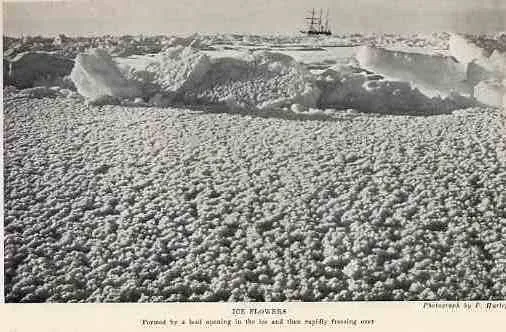
Ice Flowers
Extremely cold conditions causes water vapour to condense into flower shaped growths on a flat surface. 16th February 1915
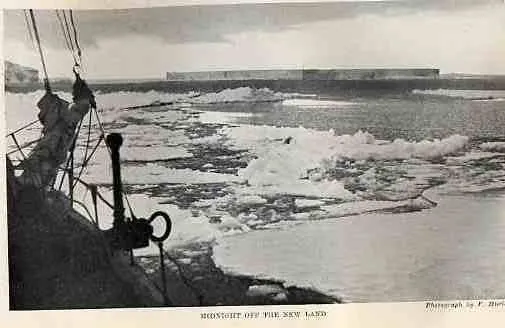
Midnight off the New Land

New Land

Close Under the Barrier
Much of Antarctica is surrounded by ice shelves which prevent landings for tens or even hundreds of miles at a time.

Trying to Cut a Way for the Ship Through the Ice to a Lead Ahead
Leads are stretches of open water, here the ship is stuck having been surrounded by ice, the only way out is to laboriously saw and axe a channel through the ice. 14th February 1915

The Night Watchman's Story
Gathered around a stove on night-watch
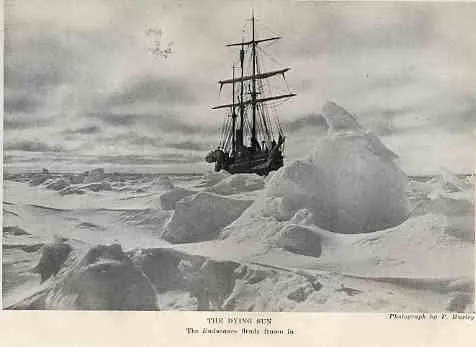
The Dying Sun
The Endurance well and truly caught fast by now in the days before the time when the sun disappears below the horizon for the winter months.
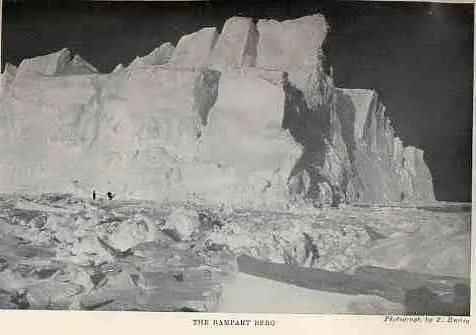
The Rampart Berg
During the winter months ice-bergs become stuck in the pack ice around them and are relatively stable allowing them to be approached on the ice.
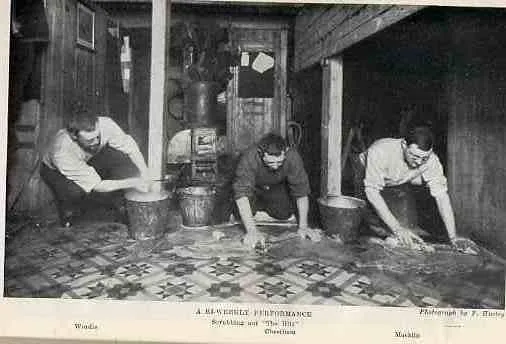
A Bi-Weekly Performance
Scrub-out, part of the regular routine of hygiene and maintenance of any base even today.
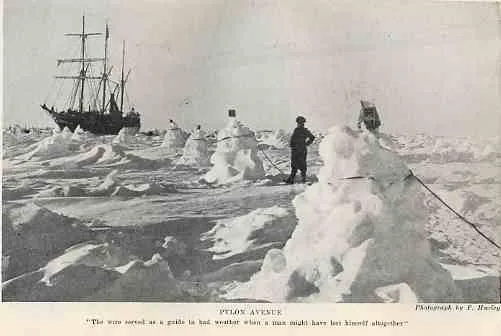
Pylon Avenue
Leaving a ship or base in a white out can be a disorienting experience, lines of some sort between features enable men to get around without wandering off and potentially dying. These days, empty oil drums often serve the same purpose.

The Long Long Night
"During the night take flashlight of ship beset by pressure. This necessitated some 20 flashes, one behind each salient pressure hummock, no less than 10 flashes being required to satisfactorily illuminate the ship herself. Half blinded after the successive flashes, I lost my bearings amidst hummocks, bumping shins against projecting ice points & stumbling into deep snow drifts." - Frank Hurley, diary 27th August 1915.
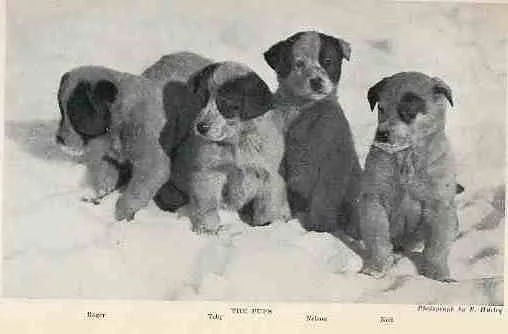
The Pups

The Pressure Approaching the Ship
The Endurance held tight by the ice is subjected to pressure as the ice moves forwards and piles up propelled by distant storms, winds and sea current
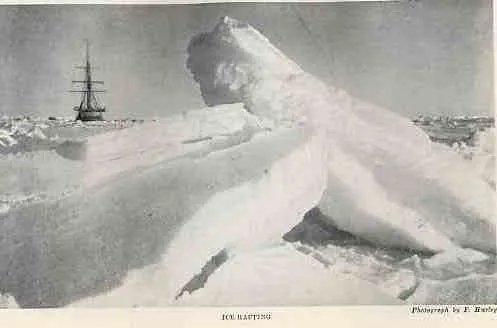
Ice Rafting
When the pressure builds, sometimes the ice has nowhere to go but on top of itself.
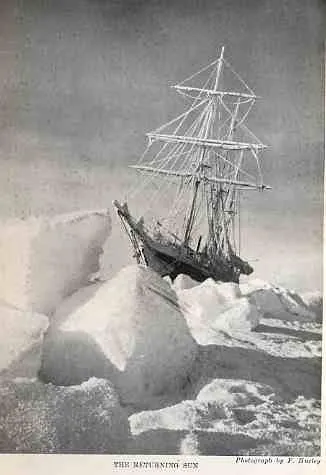
The Returning Sun
After the winter months of darkness, the sun re-appears over the horizon to herald an Antarctic spring, note the rigging covered with ice crystals.
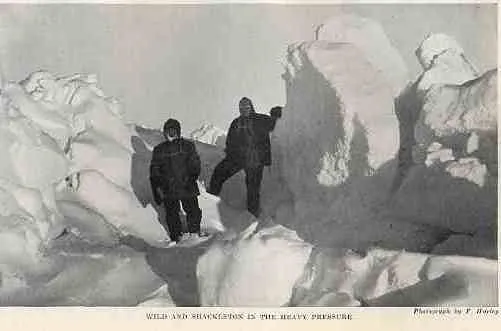
Wild and Shackleton in the Heavy Pressure
Pressure ridges can throw up some very high ridges making rugged terrain which is difficult to travel over.
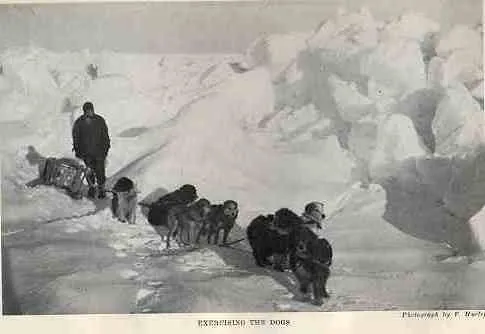
Exercising the Dogs
Pulling a small sledge through the pressure ridges and difficult ice conditions.
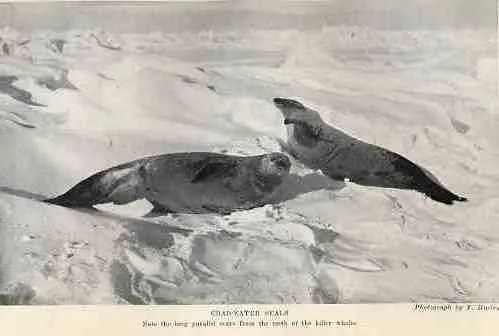
Crabeater Seals
The second most numerous large mammal on earth after man are very dispersed throughout the sea ice. They provided the staple diet for the dogs and also the men on many expeditions.
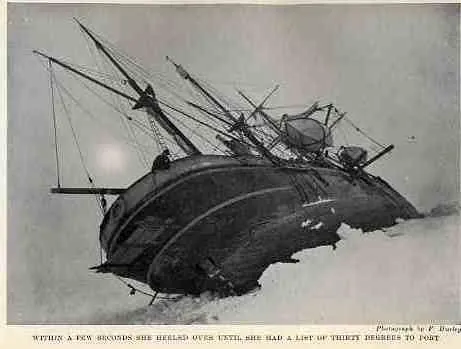
Within a Few Seconds She Heeled Over Until She Had a List of Thirty Degrees to Post
Viewed from a different angle, it became clear that the Endurance had little time left, Shackleton and his crew would face their situation and realise they had no-one to rely on but themselves.
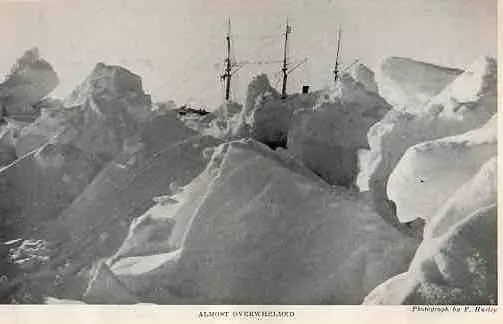
Almost Overwhelmed
Seen from behind a pressure ridge.
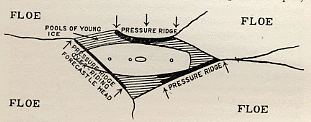
Attack of the Floes
A sketch describing how the Endurance was assaulted from all sides.

The Driving Floe Moving Laterally Across the Stern Split the Rudder and Tore out the Rudder Post and the Stern Post

The End
Endurance crushed to death by the icepacks of the Weddell Sea. The sinking ship, watched by the dogs, 1st November 1915.

A Week Later
The Endurance is completely destroyed, all that remains is for the ice to open slightly and allow her to sink into the ocean depths.
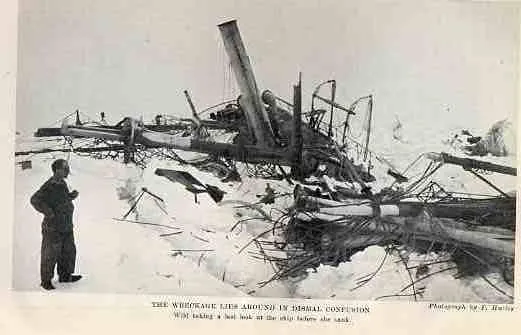
The Wreckage Lies Around in Dismal Confusion
Captain Frank Wild and the Endurance in the Weddell Sea.
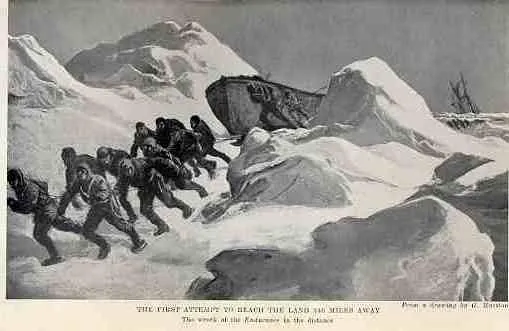
The First Attempt to Reach the Land 346 Miles Away
From a drawing. The lifeboats were loaded with supplies and equipment and used as sleds, the Endurance can be seen in the distance
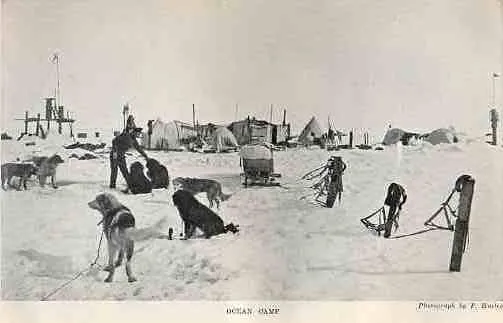
Ocean Camp
15th December 1915
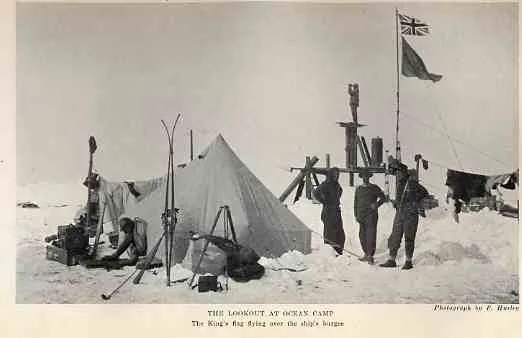
The Lookout at Ocean Camp
The Kings flag flying
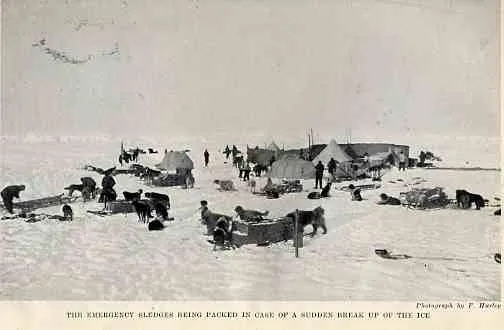
The Emergency Sledges Being Packed in Case of a Sudden Break up of the Ice
Spring was arriving and the ice floes that the crew were camping on would break up sometime and without warning, the men had to be prepared.
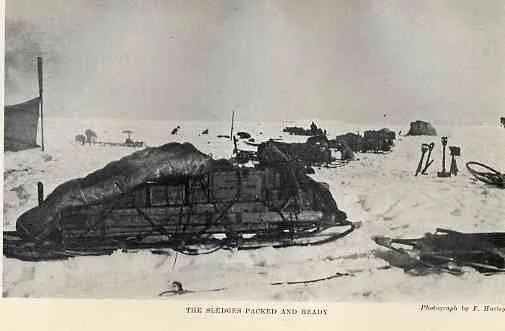
The Sledges Packed and Ready

Relaying the James Caird
Named after one of the sponsors of the expedition, the lifeboat James Caird was to prove vital in the task of returning the crew of the Endurance to safety.

"Potash and Perlmutter"
The nicknames given to the cook and his assistant, they were almost permanently black with the soot that came off the seal blubber used to fuel the cooking stoves.
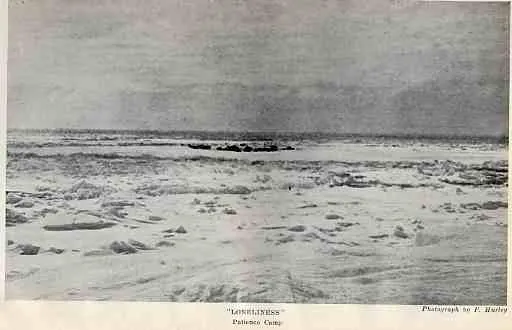
Loneliness
The camps the crew made were tiny oases in a vast expanse of white nothingness.
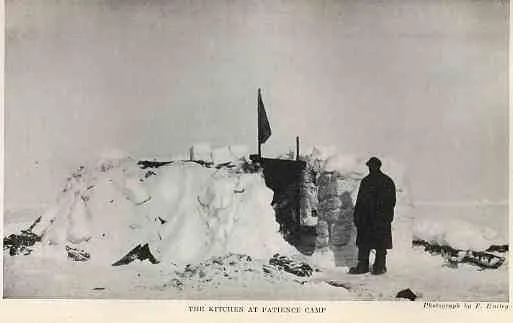
The Kitchen at Patience Camp
This camp is where the crew stayed while waiting for the ice they were camping on to break up and allow them to continue their journey by boat, in all they stayed here three months - patiently.
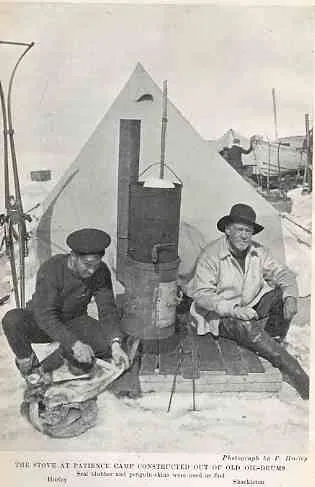
The Stove at Patience Camp Constructed out of old Oil Drums
Frank Hurley, left and Ernest Shackleton, right in front of their tent.
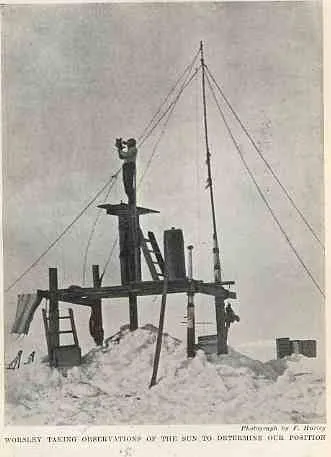
Worsley Taking Observations of the Sun to Determine our Position
The camps were far from static and drifted as the ice drifted carrying the crew of the Endurance a considerable part of the way to Elephant Island.
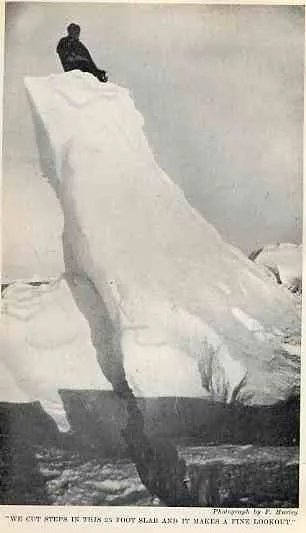
We Cut Steps in the 25 Foot Slab and it Makes a Fine Lookout
An upended slab of ice pushed by the same forces and pressures that crushed the Endurance
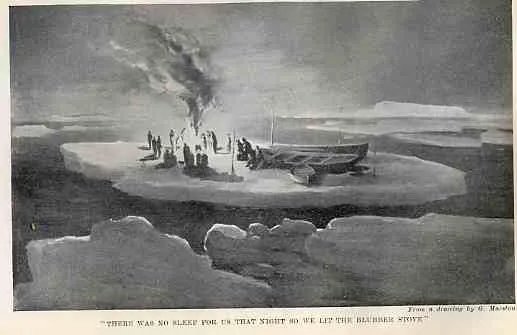
There Was No Sleep For Us That Night so we Lit the Blubber Stove
Escaping the heavy pack ice was hazardous at night, so the boats were hauled onto ice floes which was safer, though carried the danger of the floe breaking up in the night.

Hauling up the Boats for the Night
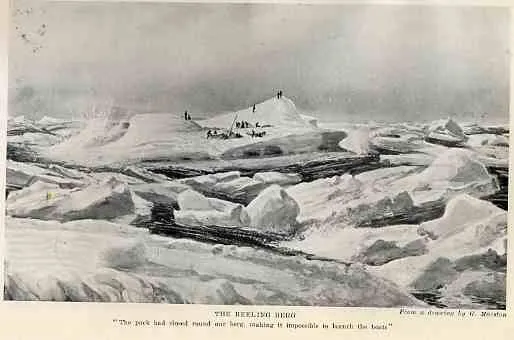
The Reeling Berg
Not an envious place to be - on an unstable piece of ice, but with too much ice surrounding to safely launch the boats lest they be crushed or damaged by the ice around.

Sailing South Again
Out of the close pack at last and able to put up sail to make progress to Elephant Island
